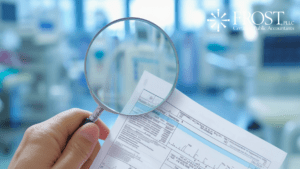Make The Most Of Profits: The Essential Overview to Food Handling Accountancy
This guide checks out the complex connection in between price monitoring, labor efficiency, and financial coverage, supplying insights that can improve procedures and improve decision-making. Secret bookkeeping methodologies, combined with the critical use of technology, can transform monetary performance.
Recognizing Food Processing Prices
Understanding the costs related to food handling is critical for businesses aiming to maintain profitability and competitiveness in a vibrant sector. The food processing sector includes various costs, including raw materials, expenses, tools, and labor maintenance. Each of these components significantly influences overall costs and can vary widely based upon elements such as manufacturing quantity, geographic place, and market problems.
Resources prices typically represent the largest part of costs, demanding cautious monitoring of sourcing and supply degrees. Labor costs also play an essential role, as competent workers are important for preserving quality and effectiveness. Expenses costs, consisting of energies, lease, and management costs, have to be monitored to ensure they do not erode revenue margins.

Trick Audit Principles
Effective monitoring of food processing prices counts on a strong structure of accounting principles. These principles work as the framework for recording, analyzing, and interpreting economic information, making sure that food processing businesses can properly analyze their profitability and functional performance.
First, the concept of consistency is crucial. It mandates that services use the exact same accounting techniques with time, promoting dependable contrasts of economic declarations. Next off, the matching concept calls for that costs be recorded in the very same period as the revenues they aid produce, which is vital for precise earnings dimension.
Additionally, the price principle dictates that properties ought to be recorded at their original purchase cost, supplying a clear basis for depreciation and possession valuation. The accrual basis of bookkeeping likewise plays a substantial duty, as it identifies expenses and revenues when they are incurred, as opposed to when cash modifications hands. This technique offers an extra reasonable view of financial health and wellness.
Lastly, the conservatism principle recommends that possibility expenditures and obligations should be identified as soon as they are potential, while profits need to only be identified when they are assured. By sticking to these essential audit principles, food processing business can improve their monetary oversight and critical decision-making.
Financial Coverage Basics
Financial reporting is vital for food handling firms, as it gives a transparent sight of their economic efficiency and setting. Agribusiness consulting. Timely and accurate economic records allow administration to make enlightened decisions, guaranteeing the business continues to be affordable and successful in a challenging sector
Secret elements of monetary coverage include the revenue statement, balance sheet, and cash circulation statement. The revenue statement offers insights right into revenues, costs, and internet profit, exposing functional efficiency.
Additionally, adhering to Typically Accepted Audit Concepts (GAAP) or International Financial Reporting Specifications (IFRS) is vital for consistency and integrity - Agribusiness consulting. Routine monetary reporting not only aids inner management but likewise meets external obligations to stakeholders, financiers, and regulative bodies
Inevitably, durable financial reporting is crucial for calculated preparation and threat management, permitting food processing companies to browse market fluctuations and take advantage of growth opportunities properly.

Price Control Techniques
Keeping a strong economic placement is not only concerning accurate coverage; it likewise entails executing effective expense control methods. In the food processing sector, where margins can be tight, managing prices is necessary for taking full advantage of productivity.
One key method is to perform routine cost analysis. By assessing the prices associated with resources, labor, and overhanging, businesses can identify areas where cost savings can be achieved. Carrying out a standard budgeting process allows for better projecting and surveillance of expenses, making it possible for timely changes to be made.
One more reliable approach is to work out desirable terms with suppliers. Developing lasting relationships can bring about quantity discount rates, which directly lower the expense of goods marketed. Furthermore, buying worker training can enhance efficiency and reduce waste, adding to overall expense effectiveness.
Finally, adopting lean manufacturing concepts can simplify procedures by eliminating great site unnecessary action in the production procedure. This not just minimizes waste yet also improves quality and rate. By concentrating on these expense control approaches, food processing business can improve their financial performance and make certain sustainable growth in an affordable marketplace.
Leveraging Modern Technology in Bookkeeping
Embracing modern technology in bookkeeping can considerably improve efficiency and accuracy within the food processing industry (Agribusiness consulting). By incorporating innovative software application services, food processors can automate repetitive tasks such as payroll, supply, and invoicing monitoring. This not only decreases the capacity for human error yet also allows finance groups to concentrate on strategic decision-making instead than ordinary administrative tasks
Cloud-based bookkeeping systems offer real-time access to financial data, enabling companies to check cash circulation, expenses, and earnings from anywhere. This flexibility is particularly helpful in a dynamic market where cost fluctuations and supply chain obstacles are widespread. In addition, making use of information analytics devices read the article equips companies to draw out actionable understandings from their monetary information, bring about educated business choices that can drive success.
Additionally, leveraging innovations like Artificial Intelligence (AI) and Device Learning (ML) can boost projecting capabilities, allowing for much better need preparation and resource appropriation. As regulative compliance becomes significantly complicated, technology can additionally help in making sure adherence to monetary coverage requirements and food security policies. Inevitably, investing in technological advancements in audit is not merely a functional renovation; it is a tactical need for food handling business aiming to flourish in a competitive market.
Conclusion
In final thought, effective monitoring of food handling expenses is essential for improving productivity within the sector. Executing robust expense control techniques and leveraging modern technology for automation and information analytics further enhance functional efficiency.
Recognizing the prices connected with food handling is vital for companies aiming to keep earnings and competitiveness in a vibrant industry. Recognizing these price elements allows food handling companies to establish effective budgeting strategies, enhance source appropriation, and recognize locations for price reduction. Eventually, a thorough grasp of food handling costs is necessary for notified decision-making and attaining sustainable growth within the industry.
Additionally, the cost concept dictates that properties should here be taped at their initial purchase cost, giving a clear basis for depreciation and property assessment. By concentrating on these cost control methods, food processing companies can improve their financial efficiency and make certain sustainable growth in an affordable market.